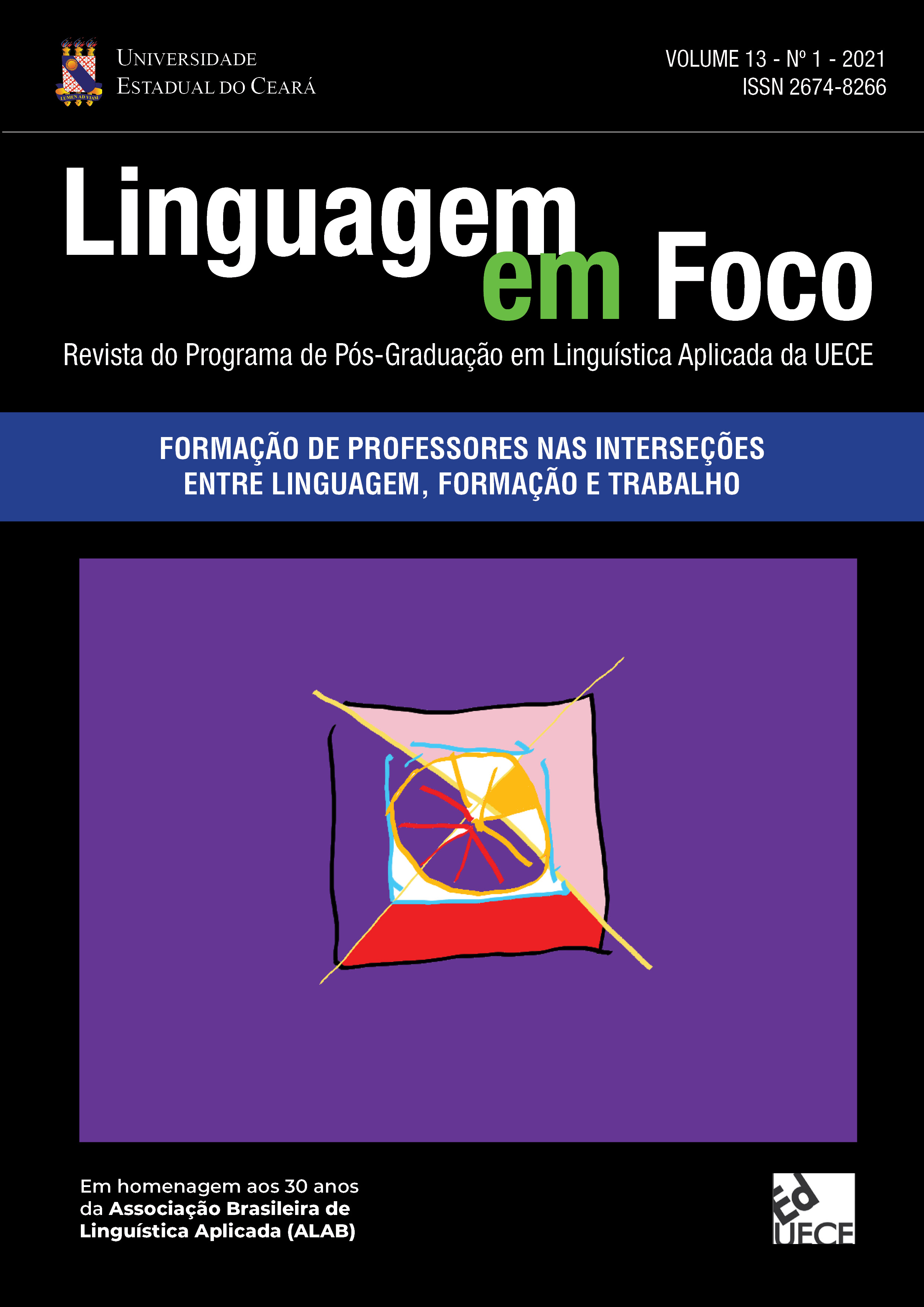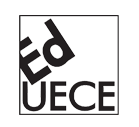Emergency distance learning and additional language teacher training
DOI:
https://doi.org/10.46230/2674-8266-13-5010Keywords:
Additional language teaching, Teacher training, Emergency distance learningAbstract
The abrupt suspension of in-person teaching at universities in order to contain the sudden spread of COVID-19 brought many challenges, among them, the remodeling of language courses offered to the outside community to the university to be offered in the online format in an emergency context. This paper proposes to present an experience report on the teaching of German in one of the extension courses at the Fluminense Federal University (UFF) and to analyze the perceptions of students and teachers in training linked to this project during remote teaching. To achieve this, an online semi-open questionnaire was applied to the teacher-tutors and students. The analyses indicate that despite the difficulties encountered, there is a positive perception of the online experience within the research participants.
Downloads
References
AMORIM, A.G.P. Ambiente Virtual de Aprendizagem – Moodle: Possibilidades de autoria, gestão e colaboração na educação básica e na pós-graduação. In: LIBERALI, F. C. et al. (Org.).Educação em tempos de pandemia: brincando com um mundo possível. Campinas, SP: Pontes Editores, 2020, p.65-71.
BORTONI-RICARDO, S. M. O Professor-Pesquisador: uma introdução à pesquisa qualitativa. São Paulo: Parábola Editorial, 2008.
BRASIL, Conselho Nacional de Educação. Parecer CNE/CP nº 19, de 8 de dezembro de 2020, das Diretrizes Nacionais para a implementação dos dispositivos da Lei nº 14.040, de 18 de agosto de 2020, que estabelece normas educacionais excepcionais a serem adotadas durante o estado de calamidade pública reconhecido pelo Decreto Legislativo nº 6, de 20 de março de 2020. Brasília, Diário Oficial da União, seção 1, p. 106, 10 de dezembro.
CHARCZUK, S.B. Sustentar a Transferência no Ensino Remoto: docência em tempos de pandemia. Educ. Real., Porto Alegre, v.45, n.4, 2020. Disponível em: http://www.scielo.br/scielo.php?script=sci_arttext&pid=S2175-62362020000400206&lng=en&nrm=iso. Acesso em: 15 fev. 2021.
CÓ, E. P.; AMORIM, G. B.; FINARDI, K. R. Ensino de línguas em tempos de pandemia:experiências com tecnologias em ambientes virtuais. Redoc,Rio de Janeiro, v. 4, n.3, p.112, set./dez. 2020. Disponível em: https://doi.org/10.12957/redoc.2020.53173. Acesso em: 26 fev. 2021.
CONSELHO DA EUROPA. Quadro comum europeu de referência para as línguas: aprendizagem, ensino, avaliação. Edição portuguesa. Porto: Edições Asa, 2001. Disponível em: http://area.dge.mec.pt/gramatica/Quadro_Europeu_total.pdf.Acesso em: 15 fev. 2021.
DODGE, B. WebQuests: A Technique for Internet – Based Learning. San Diego StateUniversity, 1995. Disponível em: https://www.researchgate.net/publication/234648506_WebQuests_A_Technique_for_Internet-Based_Learning. Acesso em: 15 fev. 2021.
GALVIN, C. E-Learning e o Ensino-Aprendizagem. In: LIMA, J.R.; CAPITÃO, Z. e-Learning e e-Conteúdos. Portugal: Centro Atlântico, 2003, p. 35.
GARCIA D'AVILA MENEZES, R. Adaptação de um curso de alemão em contexto acadêmico para o ensino remoto emergencial através de metodologias ativas.Signo, Santa Cruz do Sul, v. 46, n. 85, p. 170-179, jan. 2021. ISSN 1982-2014. Disponível em: https://online.unisc.br/seer/index.php/signo/article/view/15675. Acesso em: 15 fev. 2021.
HODGES, C. et al.The difference between emergency remote teaching and online learning.EDUCAUSE, 2020. Disponível em: https://er.educause.edu/articles/2020/3/the-difference-between-emergency-remote-teaching-and-online-learning. Acesso em: 15 fev. 2021.
LIBERALI, F. C. Construir o inédito viável em meio à crise do coronavírus - lições que aprendemos, vivemos e propomos. In: LIBERALI, F. C. et al. (Org.) Educação em tempos de pandemia: brincando com um mundo possível.Campinas, SP: Pontes Editores, 2020, p.13-21.
MAYES, T.; DE FREITAS, S. Learning and e-learning: the role of theory. In: BEETHAM, H.; SHARPE, R. Rethinking Pedagogy for a Digital Age: designing and delivering e-learning. New York: Routledge, 2007, p. 13-25.
MEANS, B.; BAKIA, M.; MURPHY, R. Learning Online: What Research Tells Us about Whether, When and How.New York: Routledge, 2014.
RIOULT, N.; MARRON, A.; PEREIRA, T. Aulas virtuais: uma discussão sobre a interação no aprendizado de língua estrangeira em tempos de pandemia. Signo, Santa Cruz do Sul, v. 46, n. 85, p. 108-121, jan. 2021. Disponível em https://online.unisc.br/seer/index.php/signo/article/view/15617. Acesso em: 02. fev. 2021.
TAYEBINIK, M.; PUTEH, M. Blended Learning or E-learning? International Magazine onAdvances in Computer Science andTelecommunications - IMACST. Disponível em https://arxiv.org/abs/1306.4085. Acesso em: 15. fev. 2021.
VALENTE, J. A. Blended Learning e as mudanças no ensino superior: a proposta de sala de aula invertida.Educar emRevista, Curitiba, n.4, p.82-85, 2014.
WHITTAKER C. Introduction. In: TOMLINSON, B.; WHITTAKER C. Blended Learning in English Language Teaching: Course Design and Implementation. Londres: British Council, 2013.
Published
How to Cite
Issue
Section
License
Copyright (c) 1969 Marina Lopes Ribeiro, Stephanie Godiva, Ebal Sant’Anna Bolacio Filho

This work is licensed under a Creative Commons Attribution 4.0 International License.
Authors who publish in Linguagem em Foco Scientific Journal agree to the following terms:
- Authors retain the copyright and grant the journal the right of first publication. The articles are simultaneously licensed under the Creative Commons Attribution License which allows sharing the work with an acknowledgement of its authorship and initial publication in this journal.
- The concepts issued in signed articles are the absolute and exclusive responsibility of their authors. Therefore, we request a Statement of Copyright, which must be submitted with the manuscript as a Supplementary Document.
- Authors are authorized to make the version of the text published in Linguagem em Foco Scientific Journal available in institutional repositories or other academic work distribution platforms (ex. ResearchGate, Academia.edu).





























